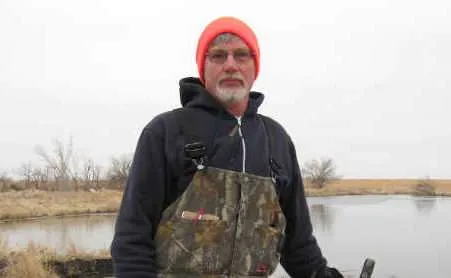Anytime now, those tremendous black birds we see soaring on the warm thermal updrafts of spring and summer, commonly known as “buzzards,” will again arrive in Kansas from their warm winter South American digs. Those winged mammoths are in fact Turkey Vultures, and along with tulips, daffodils and Red-Winged Blackbirds are one of the most reliable and predictable signs that spring is at least around the corner.
Hinckley, Ohio has an annual festival celebrating the return of turkey vultures to their skies, where they have arrived precisely on March 15 since at least 1957. The first Sunday after their arrival at Hinckley is celebrated as Buzzard Sunday. Buzzard Sunday was cancelled in 2021 because of Covid, and I will never forget the irony of a virus cancelling an event centered around a huge carnivorous bird that eats dead and possibly diseased flesh like we eat birthday cake.
The flight of a Turkey Vulture is as hypnotic and graceful as its appearance is gruesome. They truly have a face only a mother vulture could love! The red featherless head and neck that makes them appear so hideous, also earns them their name, as they do resemble a wild turkey in that regard. Now this subject matter will possibly bring me all the notoriety of being crowned the Spring Toad Queen, but I’ve always liked the underdog, and I feel vultures get a bum rap, not to mention their importance in our environment.
Turkey Vultures are natures “garbage collectors.” In fact, their scientific name literally means “cleanser.” The vast majority of a vulture’s diet is carrion; flattened, smeared across the highway, baked in the sun road kill! Bird watchers give them the abbreviated name of TV, (short for Turkey Vulture) so their meals become TV Dinners! I found through research, that vultures do eat a surprising amount of vegetation, probably to get that “sun-ripened road kill” taste out of their beaks! They posses something most birds do not; a sense of smell. This combined with excellent eyesight, allows them to spot food from a great distance. I believe God designed everything for its purpose, and these fellows are certainly engineered for their job. They are immense, and can be as tall as 32 inches with a wingspan of 6 feet. A featherless head and neck facilitates cleanup after spending hours with it buried in some carcass. A specialized beak is built for tearing apart tough, rubbery flesh. Its claws are like a chicken’s; built not for grasping and ripping, but for hopping and walking. Like owls, vultures regurgitate pellets of indigestible bones and flesh. Powerful enzymes in their digestive systems destroy any bacteria they ingest. Experts believe these enzymes could possibly even sterilize and render harmless remains of an animal killed by anthrax or mad cow disease. A vulture’s main means of defense is also quite a nasty one. They possess the revolting ability to vomit, almost at will, when scared or cornered. (I can think of NO good reason to corner a turkey vulture anyway.)
Nesting is not a priority for Turkey Vultures. In fact, they don’t’ build one. Two eggs are usually laid in a rocky crevice, an old abandoned building, or some other camouflaged spot on the ground. For a few years we watched a pair that laid their eggs and hatched their young in an old granary amidst the ruins of a tumble-down old shed. The “nest” was a slightly wallowed-out spot in the dust on the floor of the old granary, and was surrounded by an old cowboy boot and dirt & filth that had collected there over the years. While never privileged to watch the young learn to fly, we knew they did, because we arrived a time or two to find them perched on the old windmill nearby. So captivated were we by their effortless soaring that Joyce then-and-there proclaimed them to be her favorite bird.
Vultures from northern states spend winters as far south as South America. According to my research, their migratory patterns vary, and no one seems certain exactly where our Kansas vultures head when the snow flies. So, the next time you spot some of these behemoths nimbly floating on the wind, stop and watch them for a while. Try to get past their grisly appearance, and quietly thank then for picking up our garbage.
Steve may be contacted by email at stevenrgilliland@gmail.com





